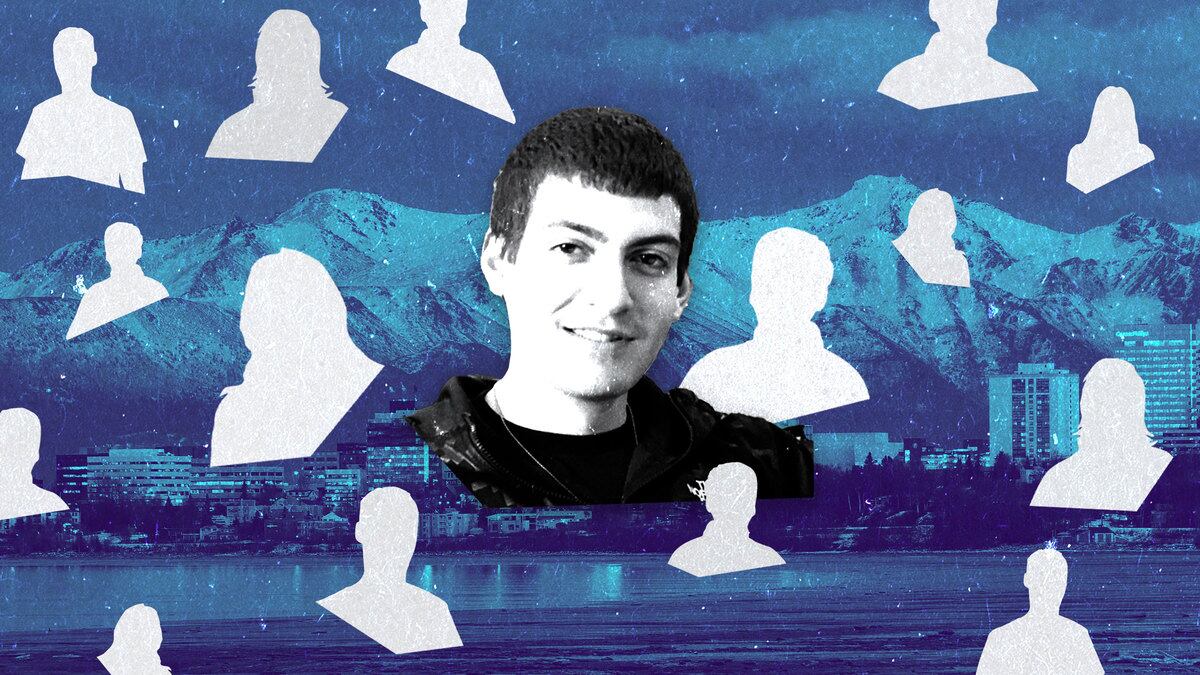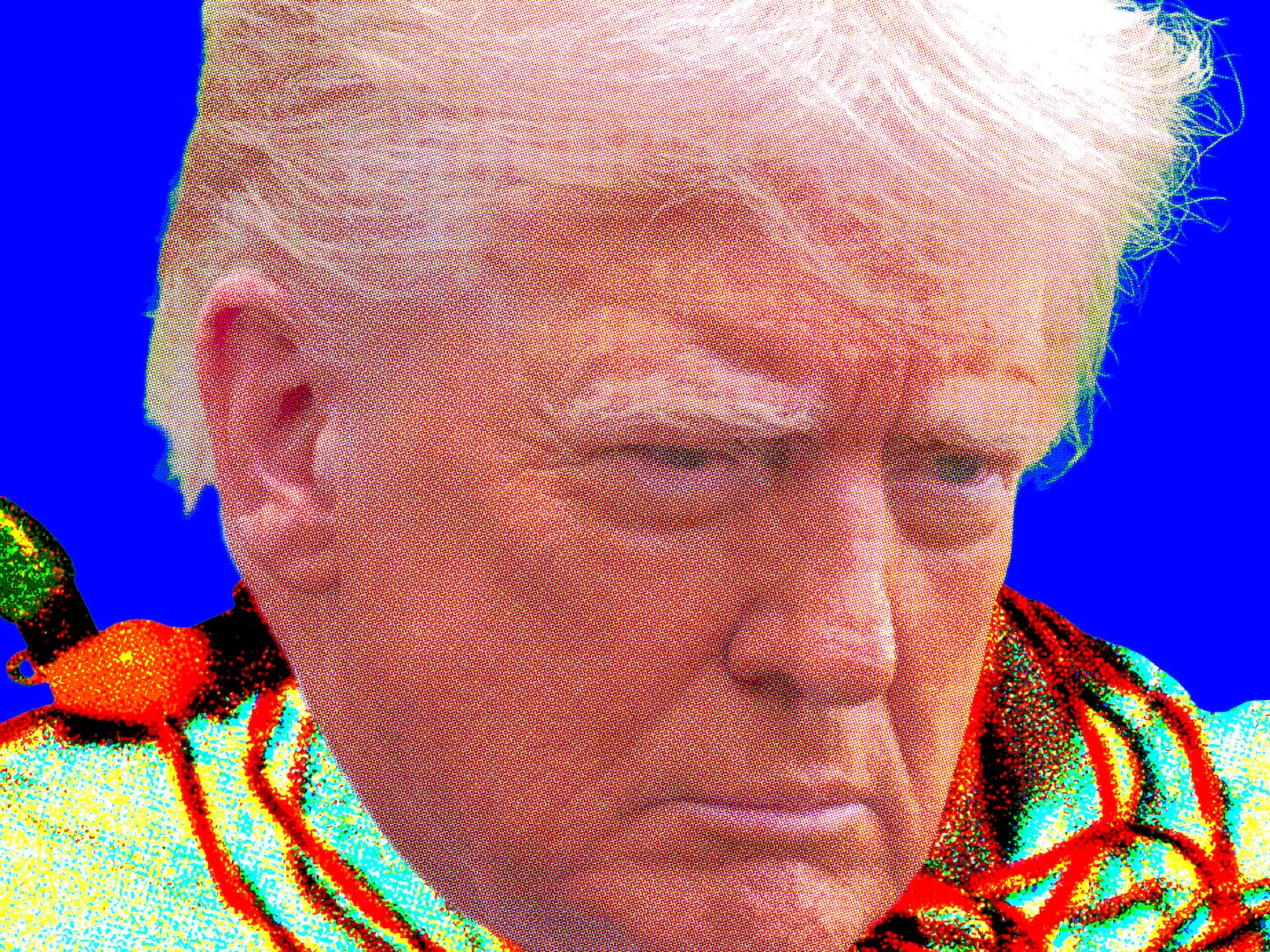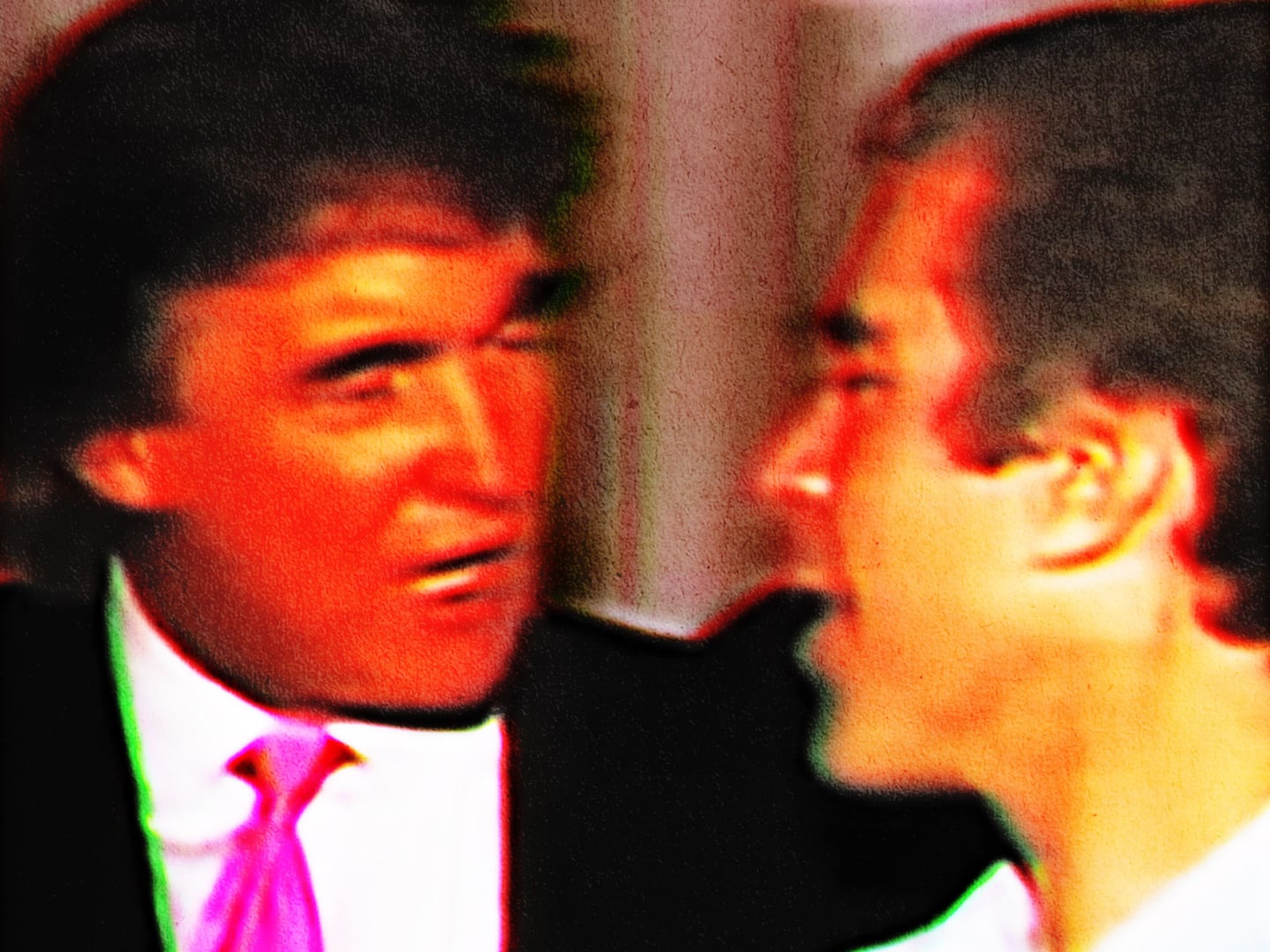Nancy Furlow knew something was wrong with her 20-year-old grandson Brandon the moment the phone rang at 1 a.m. on a winter morning and a “woman with a very cold voice” told her two police officers were at her front door.
“You know if two police officers are outside your home at that time, it isn’t good,” Furlow told The Daily Beast. “I answered the door and I tried to get them to tell me at the door but they insisted on coming inside. Then they said, ‘I am so sorry to tell you that Brandon was shot tonight.’’’
Furlow had raised Brandon like her own son since he was born. He was an energetic child who loved the outdoors. “He climbed mountains, he would slide down cliffs, and go up rivers. He could smell a bear a quarter of a mile away and tell which direction it was going in. That’s why I always loved going hiking with him,” she said.
After the officers told Furlow that Brandon had been shot, they paused, and during those few fleeting moments, the grandmother wondered which of the local Indigenous hospitals he’d been taken to for treatment. “Then the pause was over and [he] said, ‘I am sorry to tell you he did not survive,’” Furlow recalls.
Brandon Christopher Irlmeier, or Yeil Yugóo as he was called in Tlingit, was just months away from celebrating his 21st birthday when he was severely beaten and strangled before being shot near Sixth Avenue and Oklahoma Street in Anchorage, Alaska on Dec. 3, 2017. He was declared dead at 9:43 p.m.
When Furlow got the news, she fell to the ground and started keening for the grandson who called her “GMom,” who had so brutally been taken away. “It was like an atomic bomb went off inside me,” she said. “As far as your imagination goes, it is so much worse to hear those words that your loved one is gone. Your entire world changes forever.”

Nancy Furlow and her grandson Brandon Irlmeier, who she raised like her own child.
Photo Illustrations by Luis G. Rendon/The Daily Beast/Getty/Courtesy Nancy FurlowShe thought of the freezing rain outside and of Brandon’s body that was still lying where he was killed and she told the officers she was going to him.
“They wouldn’t let me go and kept talking about how my child’s body was evidence. I just couldn’t even comprehend what I was hearing. This is my child they were talking about like he was nothing,” she said.
Furlow told The Daily Beast she believes it was Brandon’s attempt to help another addict that resulted in his murder.
Brandon was diagnosed with ADHD as a child, Furlow says, and turned to drugs as he got older as he found they helped ease his symptoms. He was just two weeks away from entering a rehab facility when he was killed.
“We believe it was a young man Brandon was trying to help get back into recovery but he won’t talk to police,” she added. “He insisted Brandon come out that night and the last they were seen was riding together on this young man’s bike. Brandon was only meant to be gone half an hour and then he never came back.”
“It has only been four years since he was murdered but the Anchorage Police Department has told me that Brandon’s is now a cold case,” she said. “Brandon’s case has always been at the bottom of the detectives’ pile. I think if he was a young white girl he would have received a lot more attention.”
The Anchorage Police Department told The Daily Beast that Brandon’s case “is still an open and active investigation” and as a result they would not provide “any additional details at this time.”
They encouraged anyone with new information to come forward.
An initial police report from the time, obtained by The Daily Beast, states that detectives were initially seeking three suspects—all males aged in their late teens or early twenties—who were captured on CCTV footage near the area where Brandon was killed.
“The preliminary investigation has found there was a group of people in the area that got into an altercation. At some point, the victim was shot,” police said in the report.
An update released by Anchorage Police four months later stated they had taken a then 21-year-old named Orion Lind into custody but no charges were brought over Brandon’s murder.

Nancy Furlow has had a steel cross erected where her grandson died, left. The image on the right shows three people near where Brandon was murdered on the night he died.
Anchorage Police DepartmentFurlow says despite no arrests being made in the four years since Brandon was killed a memorial they put at the steps where he died has been vandalized more than 50 times.
“We think it is the murderers or someone close to them. They always come and rip down the cards we make, the wreaths we have there. Then last year they put a bullet in one of the flowers there and we felt it was a threat or a warning to us. They also took an accelerant and burned the entire wreath and cross we had until there were just ashes left,” she said. “The police told us no other memorials in the Anchorage area are being vandalized. It is just his. Surely that sounds like something worth looking into?”
Furlow has since erected a steel cross at the memorial site, determined not to let the heartless vandals win.
Brandon Irlmeier’s death is just one of 4,200 cases involving murdered and missing Alaska Natives that have gone unsolved, according to the Bureau of Indian Affairs. Official figures are hard to determine because demographic information hasn’t historically been collected—meaning there wasn’t an ‘Alaska Native’ option to check on many forms.
What is known, however, is that American Indian or Alaska Native victims have long been disproportionately over-represented in homicides.
A multiyear study released in 2020 by the University of Alaska Anchorage Justice Information Center found that while Alaska Natives comprise about 16 percent of the state population, they made up more than 30.5 percent of homicide victims in Alaska between 1976 and 2016.
Of those murders, the CDC’s report on Homicides of American Indians/Alaska Natives, found that the homicide rate was three times higher in Alaska Natives and American Indian males than females. However, it noted that many crimes involving Indigenous women were significantly underreported. It found the murder rate is 10 times higher than the national average for women living on reservations, with homicide the third leading cause of death for Native women.
Even more alarming, the U.S. Department of Justice had 5,712 reports of missing American Indian and Alaska Native women and girls in 2016, but the national information clearinghouse and resource center for missing, unidentified, and unclaimed person cases across the United States, called the National Missing and Unidentified Persons System (NamUs), only logged 116 of those cases.

Protesters in Edmonton mark the lives of missing and murdered indigenous women and girls.
Artur WidakIngrid Cumberlidge, who is herself an Alaska Native woman, was appointed as the state’s first Missing and Murdered Indigenous Persons Coordinator in July 2020 by the U.S Attorney’s office. She has spent the past two years visiting more than 180 of the 229 recognized tribes in Alaska in a bid to improve the data on hand and also to ensure tribal response plans are in place for when people go missing or are murdered so their cases don’t continue to slip through the cracks or get ignored.
Visiting all 229 tribes in person across America’s largest state that stretches for 665,400 square miles—more than two-and-a-half times the size of Texas—presents many challenges.
Cumberlidge spoke to The Daily Beast while traveling on a ferry from Homer to Dutch Harbor, Unalaska, roughly the distance from Chicago to L.A., to visit six additional tribes.
She said remoteness, little or no internet connection, and many communities not even having police on hand are some of the reasons why Alaska Natives fail to report their loved one murdered or missing.
“There are 80 communities who don’t have law enforcement at all,” she said. “Then you have cases where people aren’t entirely sure their loved one is missing. There might have been a crisis in the family or with the individual. A historic lack of trust in law enforcement is also a factor.
“Another problem has been the huge misunderstanding that you had to wait 24 or 48 hours to report. That is just not the case, reporting needs to happen immediately. A couple of things happen in Alaska when you report immediately—it triggers the state search and rescue, which helps provide funding for fuel, or vehicles to help with locating someone. It also starts the process where the state can request K9s if they need to, and also triggers the process to get people on the ground if they need to do that,” she said.
Cumberlidge said the reasons why more than four in five American Indian and Alaska Native women and men have experienced violence in their lifetime is complicated but compounded by “a lot of historical trauma.”
“There are the boarding schools where kids were moved out to and lost contact with their families, as well as their culture and traditions. Churches also came in and changed their relationship with religion,” she said. “Then there are secondary trauma issues like the alcoholism and drug issues that have happened in our rural communities and domestic violence issues that have happened and they weigh heavily on the increase in these numbers.”
“Our people are often not prepared when they come into our municipal communities. It is not a matter of intelligence. The warnings that you grow up with living in the city to be wary of people asking questions and things like that are just not as strong in rural communities and that makes Alaska Natives and American Indians easy prey,” she said. Cumberlidge, who has been a Tribal judge and community leader for 30 years, says former U.S. Attorney General William Barr’s trip to Alaska in 2019, where he met with Alaska Natives, was a turning point in the issue receiving federal attention.

Then U.S. President Donald Trump displays an Executive Order establishing the Task Force on Missing and Murdered American Indians and Alaska Natives on November 26, 2019.
REUTERSFrom there, former President Donald Trump established a task force on Missing and Murdered American Indians and Alaska Natives, designated Operation Lady Justice, and Alaskan Senator Lisa Murkowski co-sponsored two bills in Congress, Savanna’s Act and the Not Invisible Act, both of which are aimed at better coordinating a response by law enforcement and improving data collection.
Last month, President Joe Biden issued a release declaring Missing or Murdered Indigenous Persons Day as May 5.
Senator Murkowski told The Daily Beast that visits by federal officials as well as the landmark report from the Urban Indian Health Institute in 2018, which exposed a “nationwide data crisis” on the true number of murdered and missing Alaska Natives, helped her and others to present the stark inequality to lawmakers on Capitol Hill.
“There is no question that the epidemic of missing and murdered Indigenous women has gone on for far too long. We needed to raise awareness and show the extent of the crisis before we could gain support to address it,” she said.

Alaska Senator Lisa Murkowski has been a strong advocate for the rights of Alaska Natives.
REUTERS“We’ve made progress through measures like Savanna’s Act, the Not Invisible Act, and most recently the tribal title in the Violence Against Women Act, but we can’t move fast enough. All of us—at the federal, Tribal, state, and local levels—must make it a priority to bring greater resources and attention to this epidemic. I will continue to do that and push for policies focused on prevention, awareness, and justice for the many women and girls that have fallen victim to this heartbreaking reality.”
For Nancy Furlow, she is encouraged that there appears to be a shift after years of neglect on Indigenous issues—but wants to ensure all Alaska Natives are being prioritized.
“I never want to minimize what is happening to our women and girls and Two-Spirits, but our men here in Alaska are missing and murdered at approximately twice the rate of the women and girls. Our grief and our pain is just the same as if we had a female relative murdered or go missing,” she said.
Furlow says she wants to see the policy talk from politicians turn into progress.
“I always hold my breath when these things are announced because I want to see changes on the ground. I want to see in the next few years these rates begin to drop at least in some tribal communities. How many more families have to go through this? Brandon’s murder was the sixth for me. I have had three family members murdered and three friends murdered and that is very common with native families. How much trauma do native people have to go through before it ends?”






